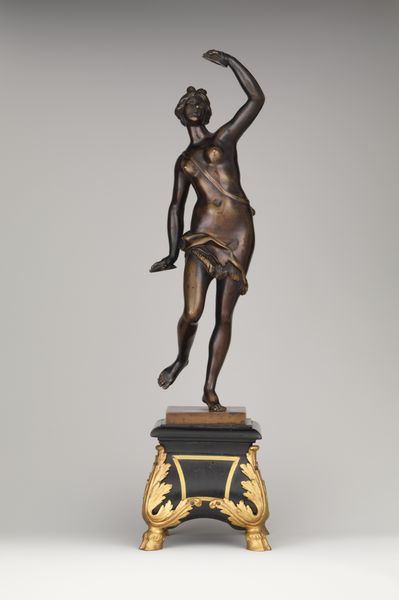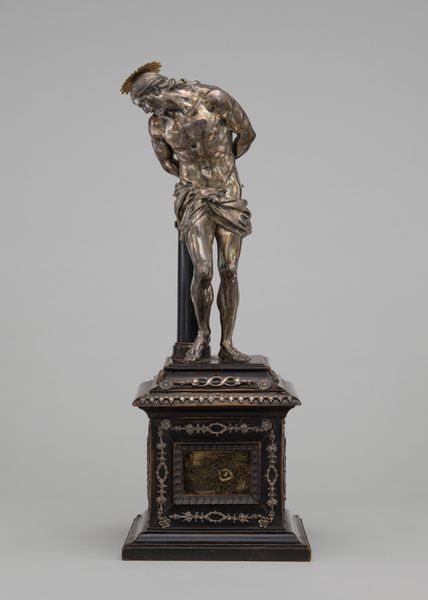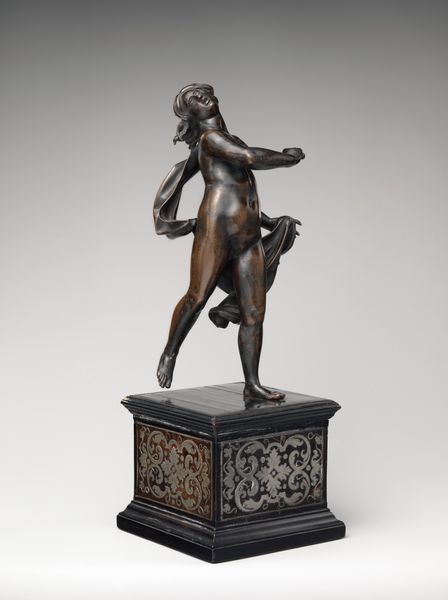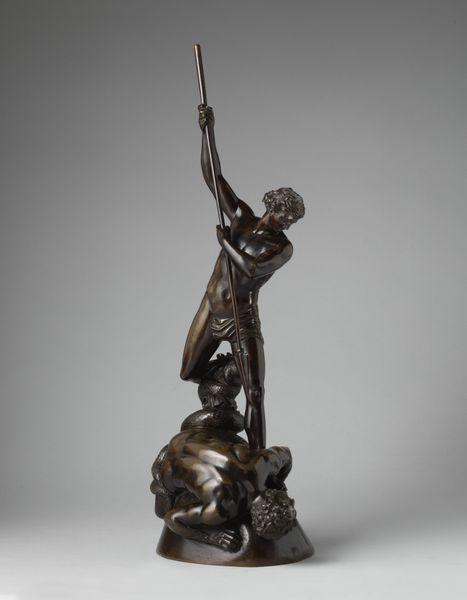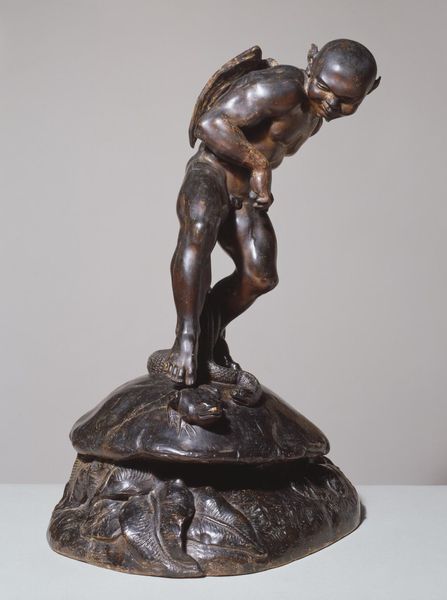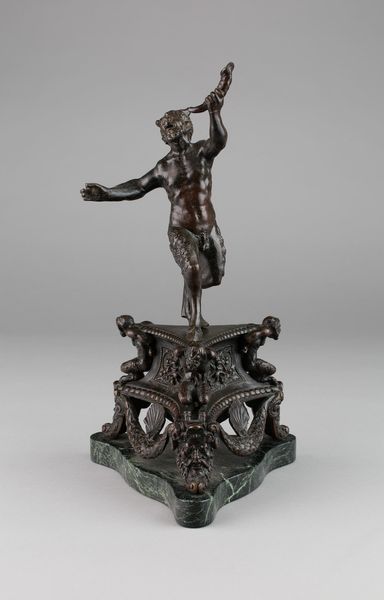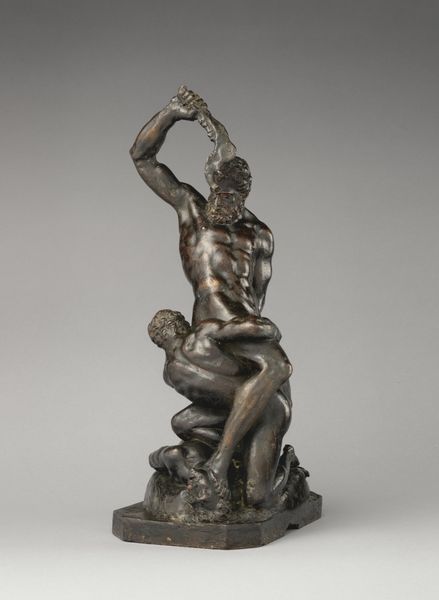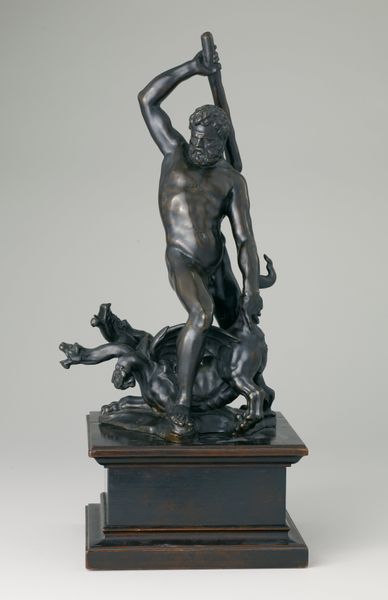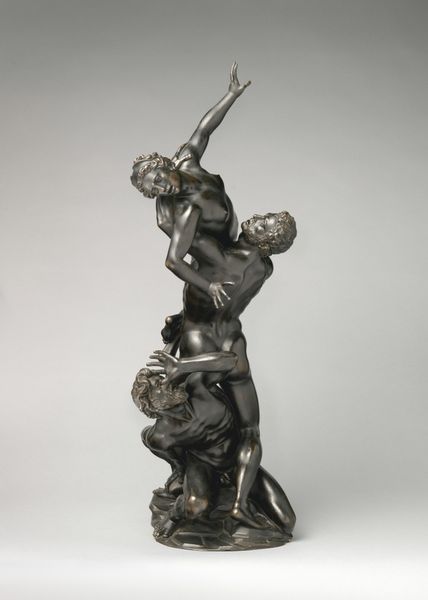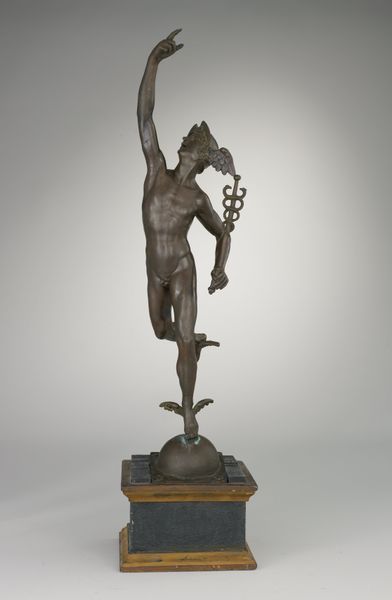
bronze, sculpture
#
stone
#
sculpture
#
bronze
#
mannerism
#
figuration
#
sculpture
#
erotic-art
Dimensions: H. 23 cm.
Copyright: Public Domain
Curator: Standing before us is a bronze sculpture called "Satyress and her Infant" crafted sometime between 1520 and 1575, and the artwork is currently part of the collection at the Metropolitan Museum of Art. Editor: The way the light catches the bronze, it's breathtaking. The figures are rendered so smoothly, with an almost unnerving sense of idealization, yet the satyress's stance feels remarkably human, strong but with that nurturing protective gaze of any mom watching her child. Curator: Indeed. The Mannerist style is evident in the elongated proportions and elegant contrapposto. It's less about a realistic portrayal of motherhood and more about allegorical beauty. The sculpture reflects a period deeply engaged with classical mythology, revived and reinterpreted for the early modern era. The imagery spoke to elite Renaissance viewers well versed in ancient symbolism. Editor: Symbolism aside, look at the rhythmic composition. The way the satyress is coiling around and with the kid on that pedestal creates a kind of helix motion that makes your eye climb all over the figures, top to bottom, again and again. Even the little tail of the infant echoes those swirling dynamics in their little moment. Curator: A key function of such sculptures was their place in the private collections of the wealthy and powerful. Displaying mythological subjects signaled refined taste, intellectual curiosity, and a connection to a glorious past. The erotic undercurrent, given the satyress’s exposed form, contributed to the piece's value within a culture that closely regulated public behavior but embraced private indulgence. Editor: Even down to the detail on that wooden pedestal: so heavy, so dark in color, that just reinforces the figures in ways both small, from the paw-shaped corners, to the support offered by the sculpture itself. So heavy. Curator: The piece, therefore, exists in a fascinating tension—public morals versus private desires, humanism meeting mythology, artistic freedom balancing aristocratic constraints. Editor: And there it all is, captured so beautifully within a seemingly simple form. I now know I can look a sculpture and never simply dismiss the heavy bases holding up these bronze visions. Thank you.
Comments
No comments
Be the first to comment and join the conversation on the ultimate creative platform.



